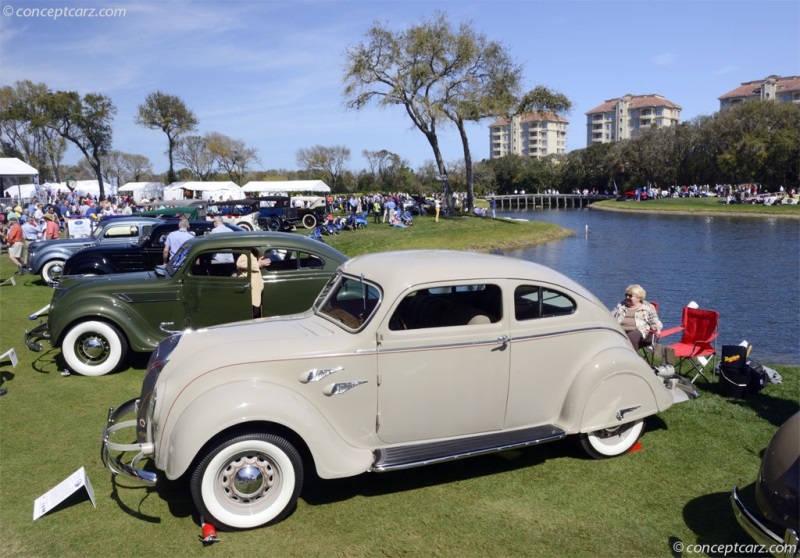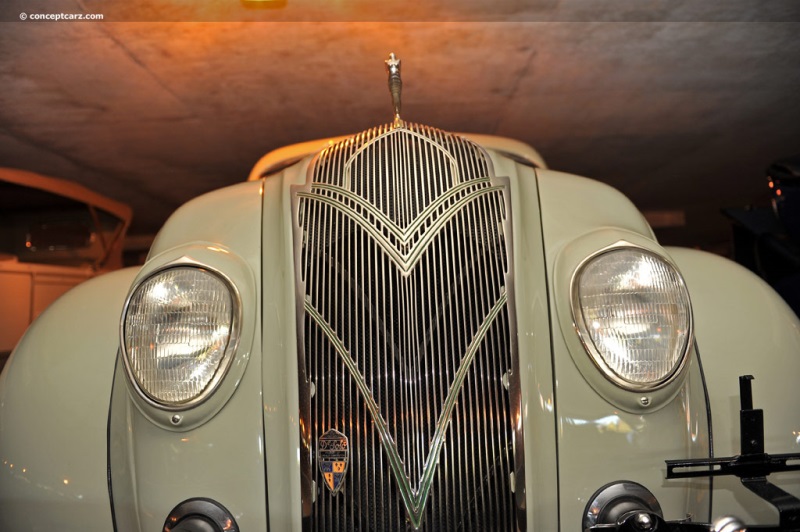The DeSoto Airflow was aerodynamic, curvaceous, and smooth with full fender skirts enclosing the rear fenders, a vee-shaped windshield, rounded radiator grille, and headlamps incorporated into the body. Its design was beyond modern, it was futuristic. The buying public was either put off by its advanced aerodynamic design or just found it unappealing but either way, sales were dismal, mirrored by its siamese sibling, the Chrysler Airflow.
Sedan
Chassis #: 5092645
View info and history
Auction entries : 1When Walter P. Chrysler formed his own company, he was accompanied by the talents of three individuals, Owen Skelton, Fred Zeder, and the unofficial leader of this group, Carl Breer. All three had decades of automotive engineering, skill, and design talents. In designing the Airflow, this team looked to the latest in aircraft design, incorporating a 'form follows function' goal using lines developed in a wind tunnel. With the engine moved forward, it achieved better weight distribution, and the passenger compartment was also moved to where it was completely between the axles, improving the ride and comfort. The flowing lines of the body were assisted by the first major use of a unibody type construction where the 'truss-bridge' chassis was actually the backbone of the body. Chrysler's Airflow was unveiled at the 1934 New York Auto Show and is now acknowledged as the first mass-produced streamlined car. Described as 'The beauty of nature itself' by Chrysler's marketing gurus, the streamlined Airflow was sold in four different versions in its initial year, 1934. Starting with the CU series, the longer wheelbase Imperial CV and CX and the limited production Imperial CW, the latter the largest car yet built by the Chrysler Corporation with a huge 137.5-inch wheelbase. The press was initially enthusiastic about the Airflow, with Harper's Bazaar stating the styling 'took your breath away.' The American public did not agree, finding it too radical, and Chrysler persevered only until 1937 before dropping the model altogether. As the years progressed, Chrysler's designers watered down the original styling to increase sales, adopting a more conventional grille design in 1935. Period advertising for Chrysler's streamlined models touted increased fuel efficiency in a time when a gallon of gas cost less than 20 cents. Fuel prices may not have been a concern at the time, but America was still in the Depression, and it was in any manufacturer's best interest to convey as much value to the buyer as possible. 
Sedan
Chassis #: 5091863
View info and history
Auction entries : 2The 1936 DeSoto model lineup consisted of the Airstream Series S-1 in Deluxe and Custom trim levels and the Airflow III Series S-2. The S-1 had a 118-inch wheelbase or a 130-inch long-wheelbase version. The Series S-2 rested on a 115.5-inch platform. Powering the S-1 was a 241.5 cubic-inch, L-head, inline-6 delivering 93 horsepower at 3,400 RPM. The S-2 had a 241.5 CID six with four main bearings, solid valve lifters, a Ball & Ball carburetor, and delivered 100 horsepower at 3,400 RPM and 185 lb-ft of torque at 1,200 RPM. Both engines were backed by a three-speed transmission with a conventional clutch and floor shift controls. Stopping power was provided by Lockheed four-wheel centrifuse brakes. Steel spoke wheels with Goodyear 'Airwheel' tires were also at all four corners.The S-1 offered a Plethora of body styles, including two- and four-door versions with seating from two to seven passengers. Prices ranged from $700 to $1,100. The S-2, however, was offered only as a two-door coupe and four-door sedan, both listed at $1,095. The sedan proved to be more popular with 4,750 vehicles sold compared to 250 coupes. The S-1 had conventional bodywork, a new horizontal bar radiator grille, and 'pennon' style hood louvers. The Deluxe versions had a one-piece flat windshield while the Customs (with the exception being the convertible) had split vee-type windshields, fender skirts, running boards, rear-wheel shrouds, and chrome moldings on top of the headlamps.
CoupeThe Airflow III Series S-2 Six received a new, flanged steel roof panel insert that was bolted to the roof's perimeter, serving as a radio antenna. It was acoustically treated and electrically insulted to better serve this purpose. Standard equipment included the hydraulic brakes, 'floating power,' unitized body construction, and Autolite ignition. Updated styling included new bumpers, new taillights, a die-cast grille with vertical moldings, twin 'pennon' style hood louvers, and redesigned bodyside moldings. The Airflow had received a more dramatic update to its styling in 1935, with a new front end, a slightly vee-shaped radiator, a slightly longer hood, and only three horizontal hood louvers instead of the previous eleven. For 1937, Chrysler would offer a single model on its DeSoto line, called the Series S-3 Six. It had traditional styling that was aligned with other manufacturers' designs of the era. DeSoto produced 52,789 vehicles during the 1936 calendar year and 43,710 during the model year. With more traditional styling in 1937, production rose to 86,541 (calendar year production) and 82,000 (model year production).
by Daniel Vaughan | Dec 2020
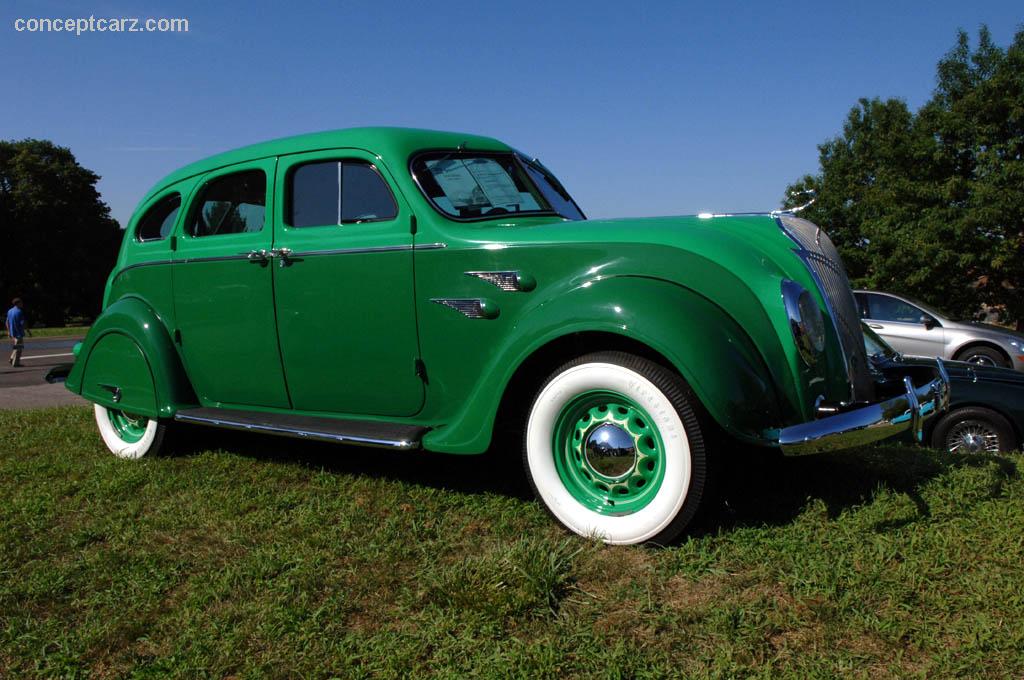
Sedan
Chassis #: 5092645
View info and history
Auction entries : 1
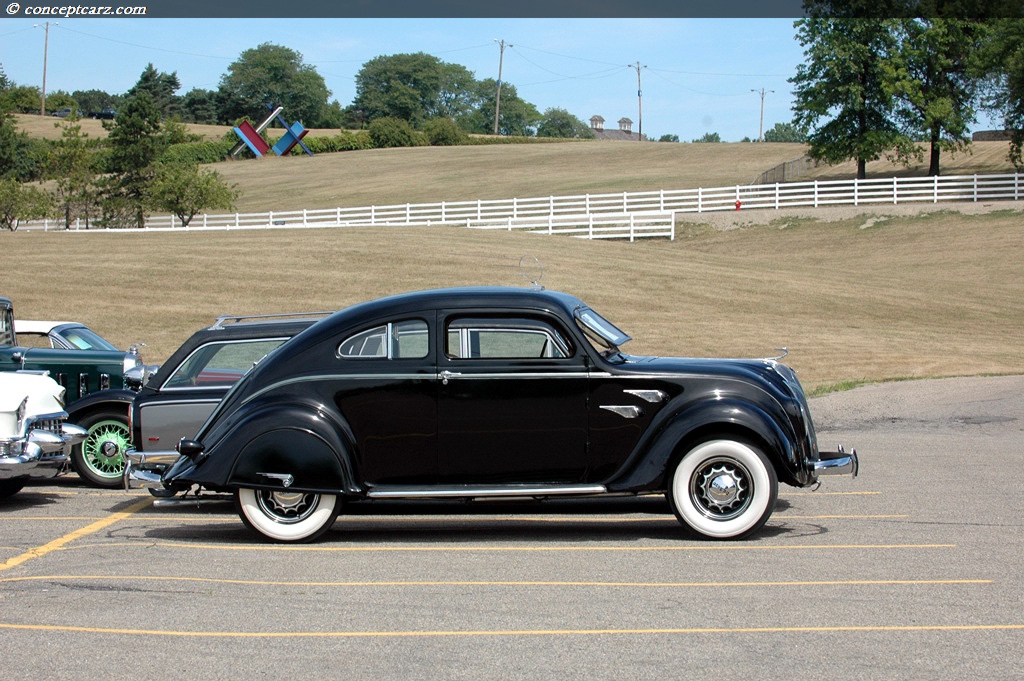
Sedan
Chassis #: 5091863
View info and history
Auction entries : 2
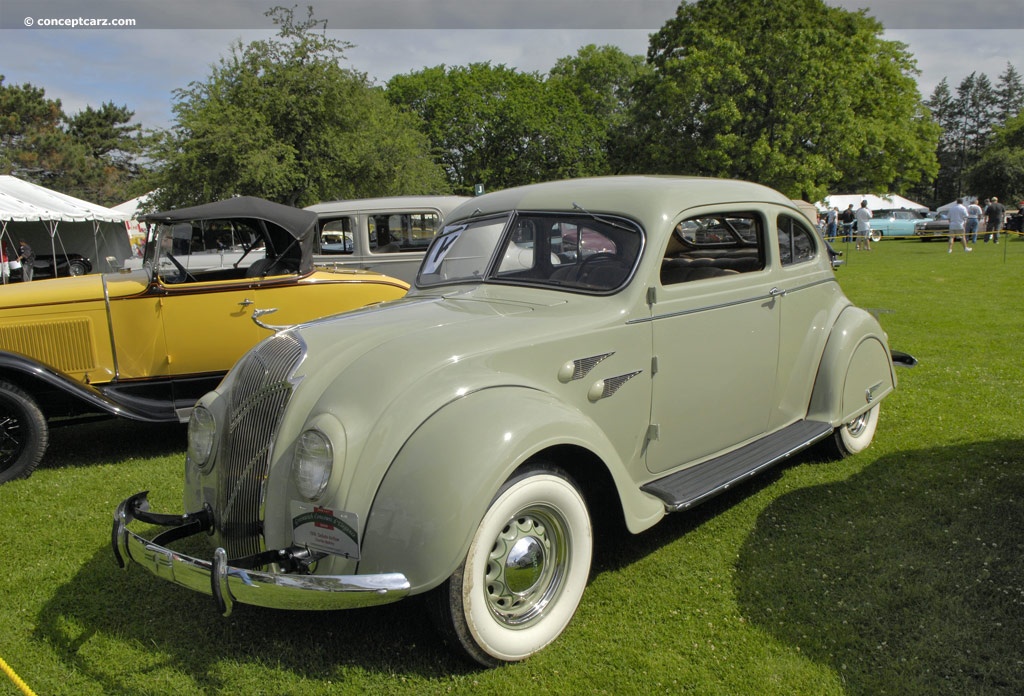
Coupe
by Daniel Vaughan | Dec 2020
Related Reading : DeSoto Airflow History
The Carl Breer-designed Chrysler Airflow was ahead of its time in terms of aerodynamics. The design was revolutionary for the 1930s the sales, however, would be its downfall. The vehicles design came about after many hours spent in wind tunnels. Orville Wright, an aviation expert, was called upon to help design a vehicle that achieved aerodynamics similar to an airplane. Lightweight, rigid materials....
Continue Reading >>
Continue Reading >>
Similar Vehicles
Similarly Priced Vehicles
1936 DeSoto Airflow Vehicle Profiles
Recent Vehicle Additions
Performance and Specification Comparison
Price Comparison
Airflow Specification Comparison by Year
Year
Production
Wheelbase
Engine
Prices
Related Automotive News
FCA Joins Plug And Play And MMSDC Partnership Creating Mobility Innovation Hub In Detroit
Plug and Play Detroit powered by AmplifyD will provide streamlined access to an ecosystem of hundreds of technology startups, with an emphasis on women and minorities
January 2, 2020 , Auburn Hills, Mich. - FCA today announced that it will...
FCA US Invests $30 Million In All-New Autonomous Driving And Advanced Testing Facility At Chelsea Proving Grounds
FCA US dedicates all-new facility for testing of autonomous driving, Advanced Driver-assistance Systems (ADAS), advanced safety technology and assessment to third-party safety ratings
6,500-square-foot command center houses vehicle-to-infrastructur...

CHRYSLER BRAND CELEBRATES 90 YEARS OF STYLE, ENGINEERING INNOVATION AND GROUNDBREAKING PRODUCTS
September 22, 2015 , Auburn Hills, Mich. - Chrysler Six, Airflow, Imperial, New Yorker, 300 and Town %26 Country are just some of the nameplates that mark the rich history of the Chrysler brand.
2015 marks the 90th anniversary of Chrysler, which...

2016 SORENTO OVERVIEW
Beautifully Redesigned CUV is Packed with Premium Materials and Amenities, Offers More Headroom and Legroom in All Three Rows, and is Capable Enough to Handle any Adventure-Seekers Lifestyle
With a new 2.0-liter turbocharged engine option as well...

ROAD & TRACK: FIAT 500E 'BEST ELECTRIC CAR OF 2013'
Fiat 500e makes Road %26 Tracks Best Cars list
Delivers big fun, Road %26 Track editors say
Best-in-class single-charge range of 87 miles, with typical city range of 100 miles and EPA cityhighway fuel-economy rating of 116 MPGe br...































